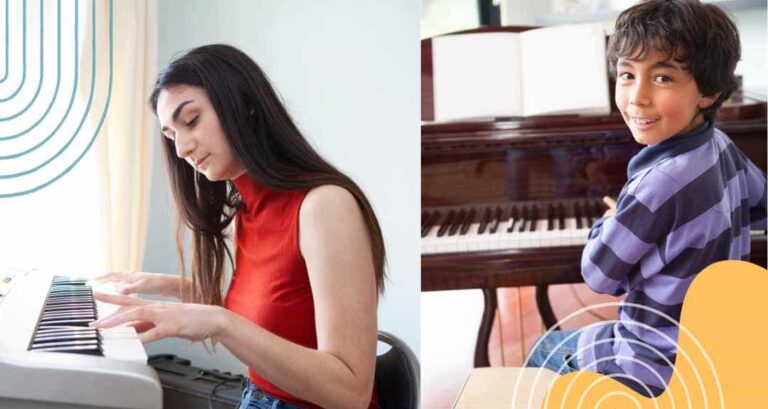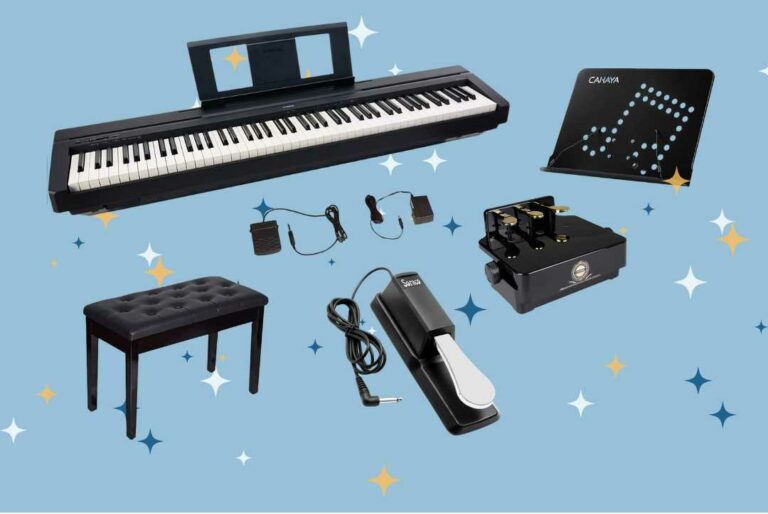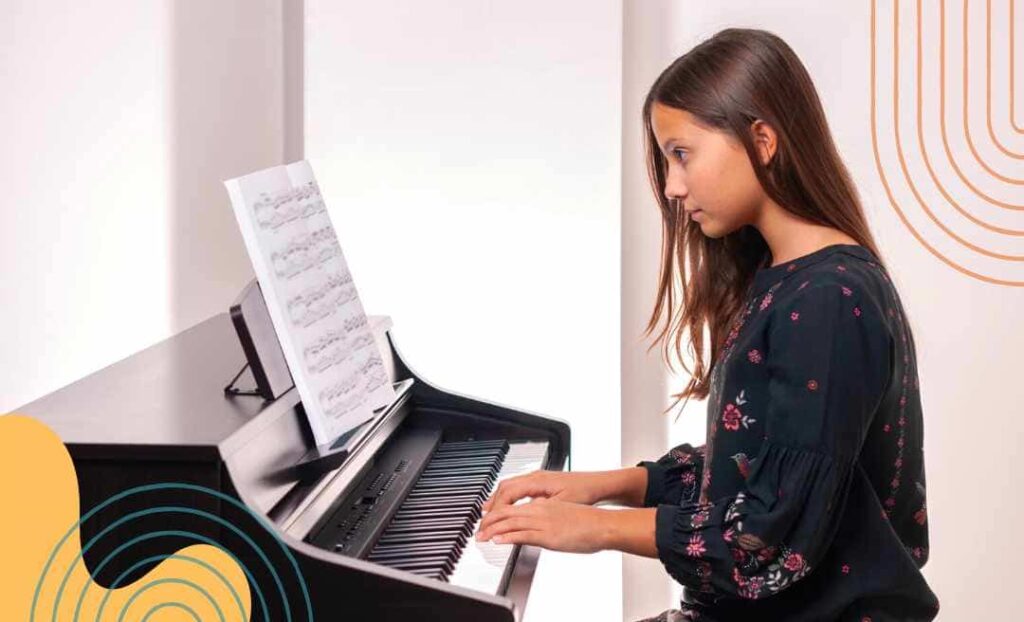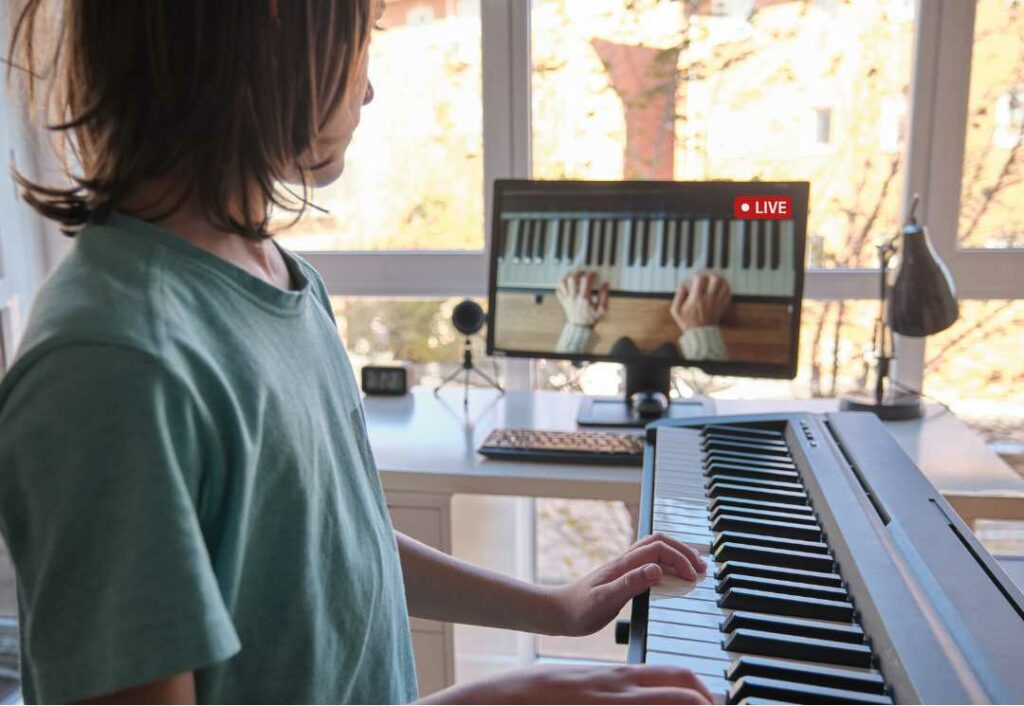Piano Practice Ultimate Guide:
7 Ways to Practice Piano for Beginners

Rose Park
By Rose Park 12/28/20 • updated 8/13/23 • 4 min read
Finding the perfect practice routine as a beginner can be tricky, especially with piano, where you need to figure out everything from fingering and reading music to mastering technique and rhythm.
So, how can piano beginners make a practice routine that’s both effective and enjoyable?
The possibilities are endless! Let’s find out 7 exciting ways to practice piano that will make your sessions more effective and fun than ever before.
Table of Contents
1. Start with 20 minutes per practice session
For beginners without prior experience
For beginners, an ideal practice session is about 20 minutes on average, regardless of age. If you’re taking a half-hour piano lesson every week, try practicing piano at least twice a week for 15 minutes each session.
If you’re taking either 45 or 60 minute long lesson every week, start with a 20 minute per practice session twice a week also.
Once you get used to the new routine, try breaking your practice into certain time intervals, just like adding jogging time gradually over time. Start adding 5 minutes or 10 minutes to your current practice session, then keep it for some time to make it yours.
For beginners with 6 months+ of experience
If you’ve been taking piano lessons for at least 6 months, 20 minutes per session, at least twice a week, is a good starting point.
Feel free to increase your practice time to 25 minutes or even half an hour, or alternate between them. If you need further guidance on keeping your practice engaging, ask your instructor for tips.
Try a Half Hour Piano Lesson Completely For Free!
60+
Instructors
30,000+
Lessons taught
4.9/5 ⭐⭐⭐⭐⭐
Average lesson rating
2. Always warm up before practice
What’s a “warm-up” in piano practice? A warm-up helps your hands and fingers move more fluidly, allowing you to play smoothly. It’s recommended for every piano player to do a warm-up before practicing or performing.
First, stretch and massage your hands and fingers, one by one. If you already have some warm-up exercises or methods such as scales and arpeggios, this is the perfect time to do it.
Then, try spreading your hand on the keyboard and see how many white keys you can reach from the thumb to the pinkie. Repeat the stretching part again. Now, try spreading the hand again and count how many keys your hand covers this time. Surprised? You’d be able to reach a wider key range the second time.
3. Break the music into smaller sections
When you have a new piece of sheet music, the best way to master it is by breaking the song into smaller sections. Instead of practicing the entire piece from start to finish, focus on one section at a time.
Here’s one suggestion, try practicing piano this way:
- Play the whole music with both hands slowly.
- Play the whole music slower and try not to stop.
- Repeat the process but with hands separately, keeping a slow-medium tempo.
- Break the music down and group them into smaller sections. The easiest way to group the measures is by locating where the melodies are.

In this example, try breaking the music into three sections by rows. First, practice the first row until you feel comfortable playing it.
Then, practice the second row just the way you did with the first row. You’ll notice that there are more notes than it was in the first row. In this case, practice the first two measures (measure 3 and 4) a couple of times and then combine the remaining measures (measure 5 and 6).
Once you’re done with practicing each row, try playing two rows at once. Play any two consequent rows and get familiar with longer phrases.

Explore LWY music lessons
4. Repeat and repeat again
Repetition is key to helping your fingers remember patterns, which is crucial for mastering the piano and memorizing music. The more you repeat playing the same section, the faster you’ll memorize melodies, harmonies, and fingering without making mistakes.
Start by practicing a small section or group of measures at least 4 to 5 times, rather than playing the whole piece from the beginning. You can adjust how many times you repeat each section. For instance, if you feel confident playing section A without looking at the sheet music, move on to section B.
If you find yourself stopping frequently while playing through the music, it’s a sign that you should focus on repeating smaller sections at a slow, steady tempo.
5. Listen to the recordings often
Listening to a recording can help you understand the sound, tone, and atmosphere of the music. This type of practice gives beginners a clear sense of the tempo and overall feel of the piece.
Try listening to the recording before and after you practice piano, or whenever you feel like it. You can also explore other music by the same composer or from the same period, which will expand your repertoire and improve your listening skills.
For example, if you’re practicing a piece by Mozart, you might explore his symphonies, operas, or violin sonatas. You can also listen to works by other composers from the same classical period, like Haydn, Beethoven, and Schubert.

6. Practice piano with hands separately
When playing music with both hands, beginners tend to make more mistakes in the non-dominant hand part. In other words, if you’re right-handed, you’ll be more likely to make mistakes on the left hand part.
Using both hands comfortably is essential in piano playing. This isn’t easy for advanced piano players either which means building a good habit of practicing both hands from the start will give you advantages in learning music faster and easier.
First, try practicing your dominant hand only for several times. Then try with the non-dominant hand only but a few times more than you did with the dominant hand. Now, play the music with both hands slowly. Lastly, play it within original tempo. Repeat this process in the next practice session.
7. Practice with different tempos
Working with different tempos is important for piano players of all levels, especially when it comes to slow practice.
Playing piano at a slower pace helps ensure accuracy and is particularly beneficial for beginners. It gives you time to really grasp the correct markings, rhythms, fingerings, and notes. Plus, it allows you to think ahead and prepare for the next measure while you’re playing.
But don’t just stick to slow tempos! Try experimenting with both really fast and super slow tempos. This kind of exercise can be especially helpful when you’re feeling a bit bored with practicing the same section repeatedly. It keeps things interesting and challenges you in different ways.
Need help with practicing piano?
Related Articles
Interested in a certain style?
Musical Theatre Singing Lessons | Classical singing Lessons | Rock singing Lessons | Country singing Lessons | Pop Singing Lessons
Classical Guitar Lessons | Acoustic Guitar Lessons | Jazz Guitar Lessons | Rock Guitar Lessons | Electric Guitar Lessons | R&B Guitar Lessons

Rose Park
Rose Park is a graduate of the Jacobs School of Music at Indiana University where she studied Piano Performance and Arts Administration, receiving both Bachelor's and Master's degrees before co-founding Lesson With You. As a pianist, Rose was a prizewinner in many international piano competitions and performed at various summer programs and festivals across the United States, Italy, and Japan.




